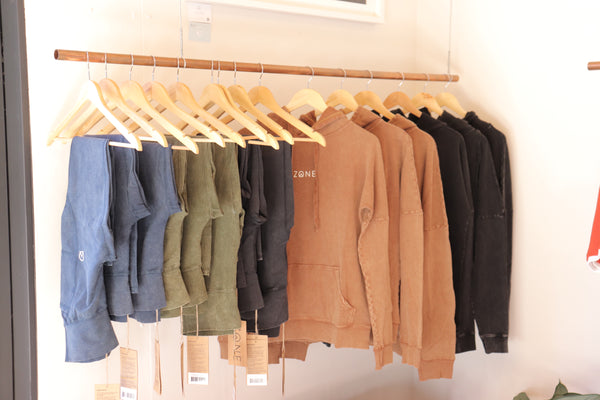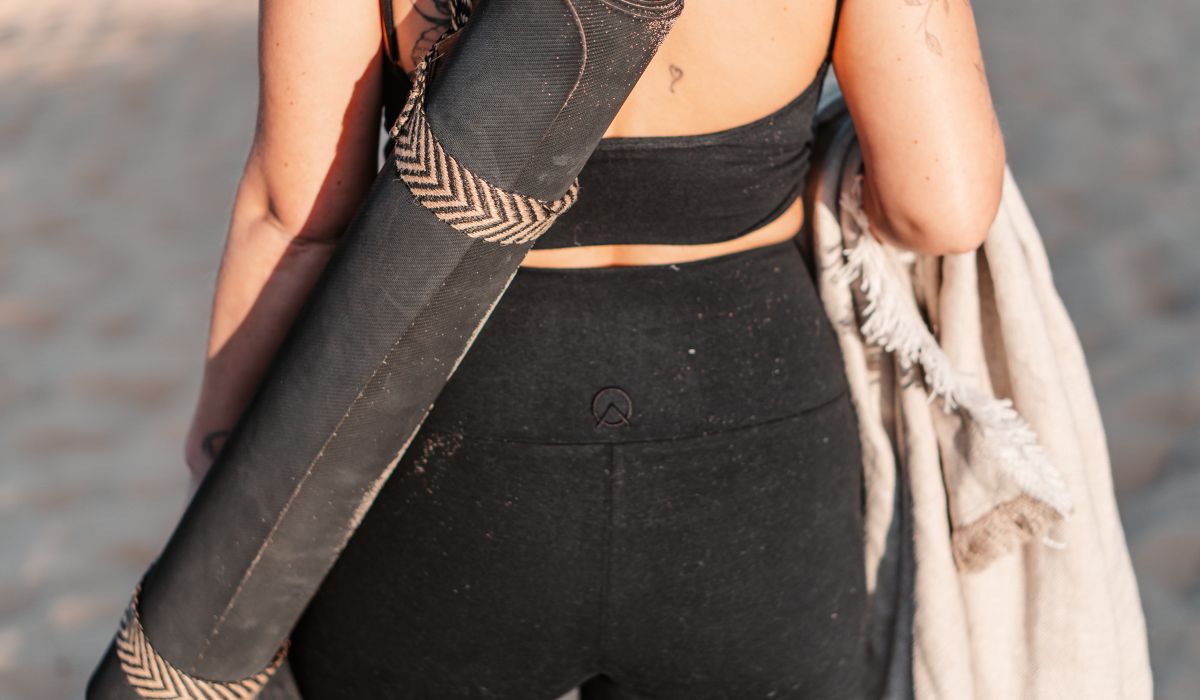The story of hemp clothing is as enduring as the hemp plant itself. From clothing ancient civilisations to powering the sails of explorers, and even lending its strength to the iconic American flag— hemp has repeatedly withstood the test of time.
And why wouldn’t it? Compared to other natural or synthetic fabrics, this amazing super-fibre is stronger, more durable, antimicrobial, gets softer with wear as well as being a highly sustainable fabric. But before we delve into why we should all be wearing hemp clothing, let’s travel back to its ancient roots.
Ancient Wisdom
Hemp is as old as civilisation, with its origins traced back to around 10,000 BCE in Northern Asia. An ancient textile, the plant was primarily cultivated for its fibres, which were among the first to be spun into fabric for clothing. This era marked the beginning of the hemp plant's role in human society, providing materials for garments, shoes and even early forms of paper.

In addition to its practical uses, hemp held cultural and spiritual significance for many ancient societies. The Vedas, sacred Hindu texts written in around 2000 to 1400 BCE, revered hemp as one of five sacred plants. Similarly, ancient Egyptian texts from the second millennium BCE document the use of hemp in medicinal practices. In ancient China, hemp was sought after not only for its practical uses in clothing but also for its medicinal and nutritional properties.
The Sailors’ Friend
As civilisations expanded, the use of hemp spread across the continents. By the Middle Ages, Europe had embraced hemp for its incredible strength and durability, making it the material of choice for ship sails, ropes, and rigging in the burgeoning era of naval exploration. Hemp’s reliability on the high seas and incredible UV tolerance played a crucial role in the age of exploration and the connecting of countries.

The American Dream
Hemp’s versatility made it a vital crop in the American colonies, where it was used to make a wide range of hemp products, from hemp clothing to paper. It was so important that farmers were sometimes legally required to grow it. Hemp clothing was worn by the early settlers and even played a role in the founding of the United States; the first drafts of the Declaration of Independence were written on hemp paper, while it is documented that the first American flag was woven with hemp. Thomas Jefferson and George Washington both grew hemp on their estates, recognising the importance of the industrial hemp industry to the emerging nation's economy and independence.

Hemp in Australia
When hemp seeds arrived in Australia with the First Fleet in 1788, they promised a valuable resource for the British settlement. However, the 20th century brought challenges for hemp production, pausing its journey in Australia for several decades before making its resurgence.
The 20th Century Downturn
Despite its deep roots in human history, the industrial hemp industry faced significant challenges in the 20th century. This period saw a significant decrease in its use, particularly in the clothing industry, as cotton and—eventually, synthetic fibres, took centre stage.
Hemp's banishment in the United States traces back to the 1930s, a period marked by controversy. Marijuana and hemp belong to a plant species called Cannabis Sativa. Hemp, unlike marijuana, is cultivated for its natural plant fibre and health compounds. It does not contain high levels of THC, the chemical in marijuana responsible for making people high.
The Anti-Cannabis Campaign
Despite the absence of psychoactive properties that characterise marijuana, hemp became caught up in a storm of anti-cannabis propaganda. This effectively blurred the distinctions between hemp and marijuana, wrongly positioning hemp as a threat to the moral and social fabric of American society.The campaign against hemp was not just a matter of public misunderstanding; it was motivated by industrial and political interests. At the time, hemp posed a competitive threat to emerging industries, including cotton and paper production. It was less about safeguarding public morals and more about eliminating competition for these industries. This led to heavy regulation leading to a ban on all varieties of cannabis - including the low THC industrial hemp, paving the way for cotton and synthetic textile production.
An Environmental Crisis
Banning hemp took us on a path filled with consequences for our planet. As we turned to synthetics and cotton, we moved away from the natural harmony offered by hemp's simplicity and sustainability. Organic clothing and natural fabrics became less important and hemp culture, whilst not forgotten, lay dormant. This shift led us into a cycle of fast fashion and waste, weighing heavily on the Earth.

Cotton, despite being a natural choice, demands so much more from our soil and water and is highly dependent on pesticides, taking a toll on resources that hemp never would and creating bad farming practices. Meanwhile, synthetic fibres are cheap but ultimately cost us the earth, polluting our soil, water and air. A fast turnaround in production has resulted in a highly unethical billion-dollar industry that produces trend-driven, low-quality clothing that ultimately ends up in landfill and doesn't decompose for many years, if at all.
A Modern Renaissance
Today, we are witnessing a renaissance in hemp’s popularity, driven by an increasing awareness of environmental issues. Hemp asks for so little — minimal water, no pesticides — and in return, gives back to the earth. It holds the promise of a cleaner, greener future with its unlimited potential— being used to create biofuels and bioplastics.

The legal landscape surrounding hemp cultivation is changing, with many countries recognising the distinction between hemp and its psychoactive counterpart, leading to relaxed regulations and a revival of the hemp industry.
A Much Needed Comeback
Hemp clothing is making a comeback. Why? The biggest reason is that hemp is something of a wonder crop. It requires far less water and no pesticides to grow, compared to conventional cotton. It's incredibly durable, meaning that hemp clothes can last for years, if not decades, reducing the need for fast fashion. Moreover, hemp is biodegradable, leaving a gentle footprint on our planet.
Hemp's breathability, UV resistance, natural antibacterial and anti-fungal properties make it an ideal choice for clothing. Moreover, as the fabric is worn and washed, it becomes softer and more comfortable without losing its strength, making it a truly sustainable material. No longer just the wardrobe staple of hippies in natural threads, high fashion brands like Levi’s and Oroton have released hemp clothing collections, while a limited number of slow fashion brands (including ZONE and brands like Braintree Hemp) opt for hemp as their primary fabric of choice.

Why Demand for Hemp Matters
At present, hemp clothing often comes with a higher price tag, a reflection of the limited scale of its production and processing. Yet, this scenario holds the seeds for change. As awareness grows of hemp’s minimal environmental footprint and unmatched durability, so too does our demand for it. This demand for suppliers of hemp is the key to creating a sustainable fashion industry both globally and here in Australia.
Increasing consumer interest in hemp prompts a ripple effect: it spurs larger-scale cultivation and innovation in processing technologies, which in turn can reduce the cost of producing hemp. The beauty of this process is its simplicity—the more we choose hemp, the more accessible and affordable it becomes. Remember, word of mouth counts— talk to your friends about the amazing benefits of hemp: the more hemp supporters we create, the better!

The Power of Collective Action
Every hemp garment we choose is a vote for a healthier planet and a show of support for the farmers and communities involved in its cultivation. As demand for hemp increases, we pave the way for a fashion industry that prioritises ethics and sustainability, alongside style and comfort. This shift requires a community effort: choose hemp, choose a better future (and a better, more durable, timeless wardrobe!)

Hemp Clothes: The Sustainable Fashion Choice
What makes hemp clothing sustainable? In the world of fashion, hemp stands out as a fabric that is durable and gets softer with each wash, with a guaranteed long life cycle. Its natural resistance to bacteria makes hemp fabric anti-stink, meaning less washing— ultimately using less water and energy. And, lastly, hemp is 100% biodegradable, meaning it won’t clog up landfill and leech toxic chemicals and microplastics into soil or waterways.

ZONE by Lydia: Hemp Clothing Australia
At ZONE, our dedication to sustainability is woven into each piece of our hemp clothing capsule and we want you to experience the benefits of hemp firsthand. Our hemp clothes are classic pieces and designed for everyday wear, including:
- Hemp Men's & Hemp Women's T-shirts & Tanks: Made with sustainable natural hemp and organic cotton, our snow wash hemp tees and hemp muscle tanks are light, moisture-wicking, and odour-resistant, which means more wearing and less washing (yay!).
- Hemp Hoodies & Sweaters: Our signature gender neutral hoodies are made from sustainable hemp and organic cotton, which means the more you wear them, the softer they get. Hemp fabric is breathable, moisture-wicking, odour-repelling, durable, comfortable, and will keep you cosy all year round. Opt for larger sizes for hemp oversized hoodies.
- Hemp Crop Tops, Hemp Leggings & Bike Shorts: Made from 52% Hemp, 43% Organic Cotton and 5% Spandex means more wearing and less washing. Our colours are inspired by nature and we finish our garments with a snow wash which gives each piece its own unique, weathered look.
- Hemp Joggers: The sustainable materials and natural fibres of our gender neutral hemp joggers ensure that they keep you warm in winter while cool in summer.
Be the change you wish to see in the world: start shopping for women and men’s hemp clothing Australia today and plant the (hemp) seeds of change. Free Australia-wide delivery for orders over $50!






